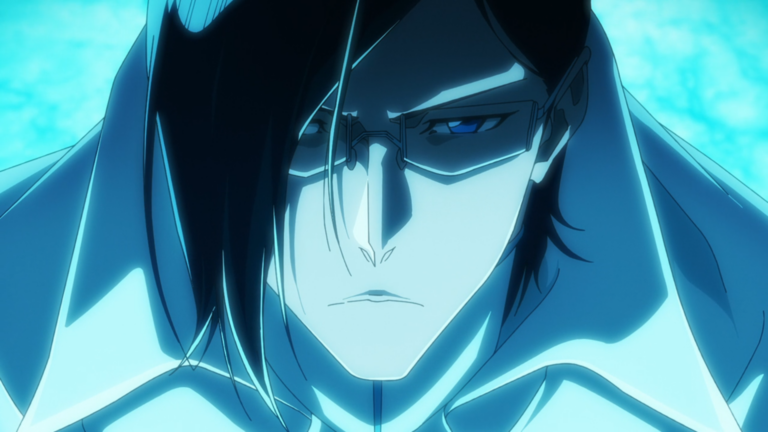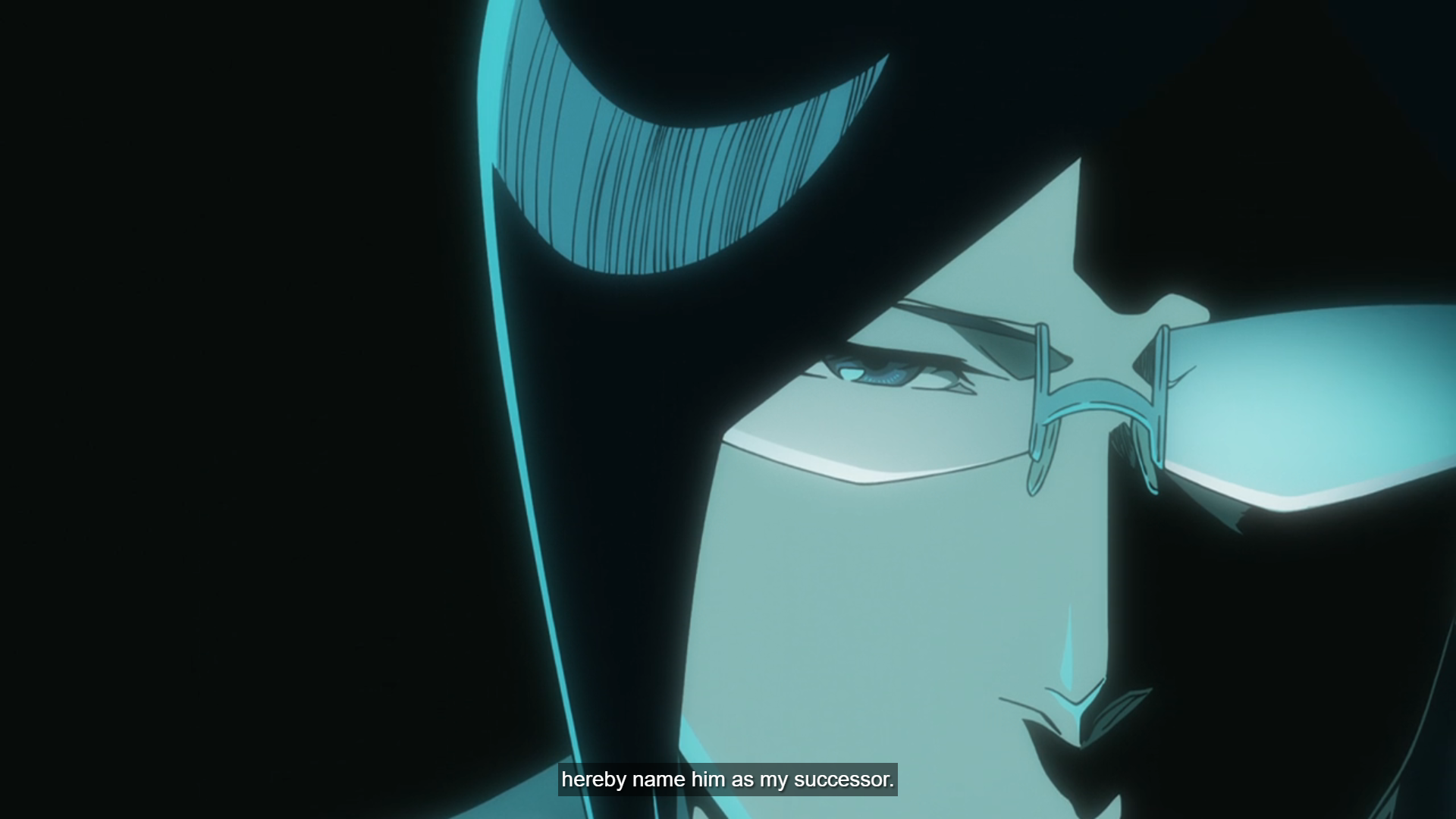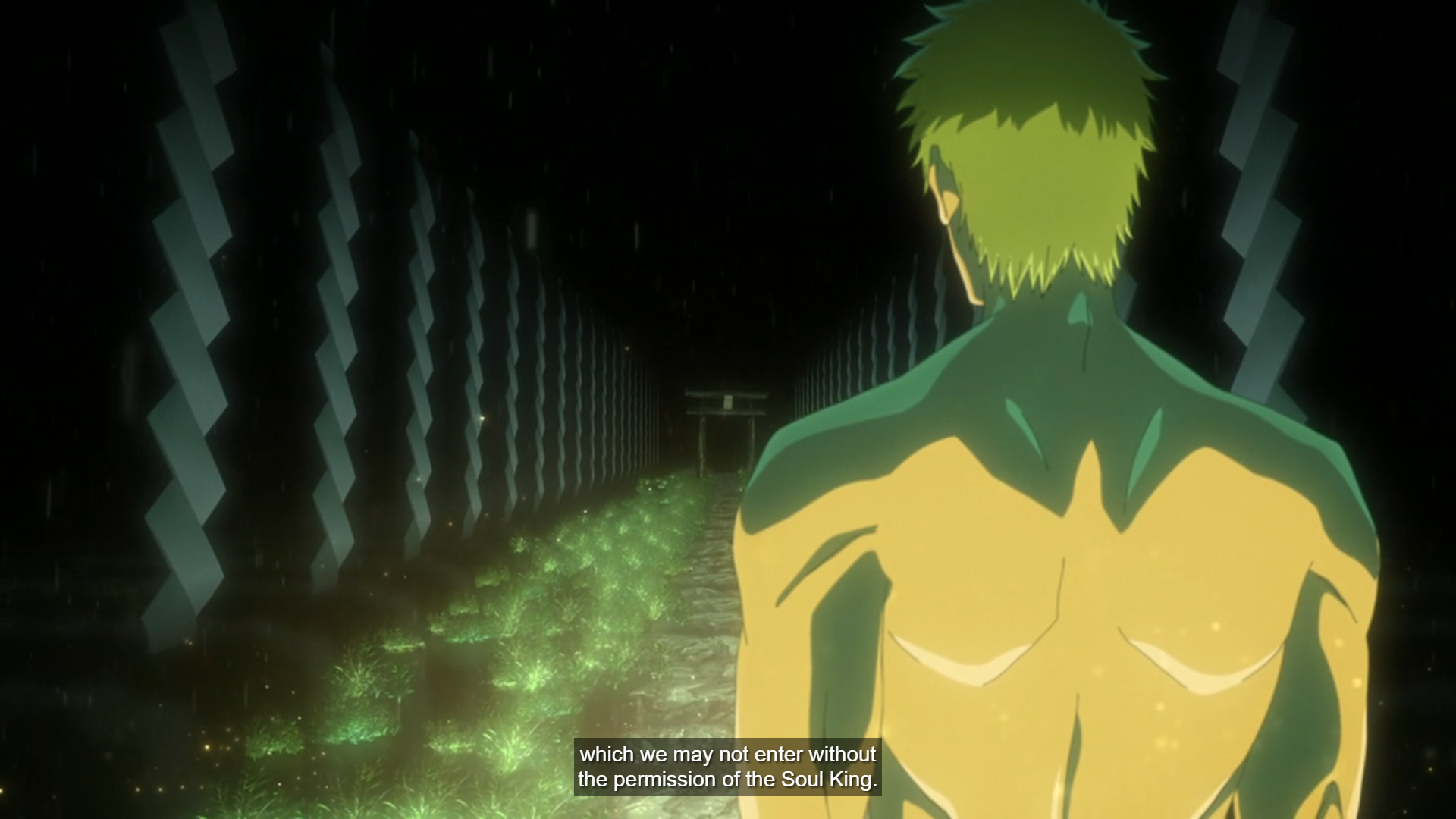BLEACH: Thousand-Year Blood War, Part 2: The Separation began this week — granting longtime fans a feeling they haven’t ever had for the anime: fulfillment of the excitement from the few months between seasons. I’ve spoken in the past about the logistical reasons behind the decline in popularity and quality for the original BLEACH anime. Anime storylines catching up to the manga, long stretches of wildly-disliked filler, and inconsistent pacing plagued the show long ago. Now, with a seasonal schedule and no manga to overtake, the anime has a chance to put time into building up and crafting a strong, structured story. Even more, the break between seasons lets small pieces of information, like the revelation that the anime will feature battles not in the manga, further drive hype and provoke speculative gossip from fans. The premiere of BLEACH: Thousand-Year Blood War, Part 2: The Separation delivered on that excitement with a fantastic continuation from part one.
BLEACH episode 14 was excellent in many ways, but there are a few areas I think are particularly worth noting. Visually, the anime is as fantastic as it has been for the past 13 episodes. BLEACH makes use of bright colors and a sort of neon, glow effect (especially for scenes taking place in Wandenreich) to create strong contrast between a pitch-black background and a character. Lighting in general has been a consistently strong area for BLEACH: Thousand-Year Blood War so I won’t dwell too much on that. The other areas, which I’ll go into more detail on below, are the structuring of the story, especially with the changes from the manga, and what that will mean for the series going forward.
Spoilers ahead for BLEACH: Thousand-Year Blood War through episode 14. You can read a full review of part one here.
Pride, Plans, and Power
When we last left off with the series, the audience got a glimpse into the circumstances of Ichigo’s birth and how his parents met. This set of stories enhanced the current events of the series as Ichigo was sent away from the Zero Division to learn more about himself before returning to have his sword reforged. The climax of this was beautiful; Ichigo interrupted the forging process to make sure his Quincy origins were not cast aside and ended up with two Zanpakuto: one representing his Quincy side and the other his Hollow / Soul Reaper powers. For Yhwach and the Quincy, they had just successfully led an attack on Soul Society, killing head captain Yamamoto and completely wiping out the forces of the Sereitei.
BLEACH episode 14 thankfully did not make this into a recap episode, instead continuing immediately from the prior part. Early in the episode Yhwach reveals that he has chosen Uryu as his successor and we get some insight into the friction amongst the Sternritter who (broadly) object to his decision. Their objection is not rooted in a desire to be the successor themselves. Instead they object to Haschwalth, Yhwach’s second-in-command, not being the successor. I think these scenes are very important in characterizing the Quincy and their focus on purity, insider/outsider dynamics, and lineage. There were even some redactions of more comedic and crude portions of the conversations amongst Stern Ritters, giving more focus to these interpersonal elements. Uryu was purportedly chosen because he survived the Auswählen that eradicated all other mixed-blood Quincy and robbed them of their powers. He, despite knowing this, also questions his appointment, and in a way much different than in the manga.
Uryu’s thoughts turn to his many dead family members and the details uncovered in his grandfather’s diary, something that does not exist in the manga. He has always wondered why he survived and his mother did not — creating immediate parallels between him and Ichigo, whose mother also perished due (in part) to the Auswählen . He justifies accepting Yhwach’s blood and power because on his lineage and the pathology ascribed to Quincy and Soul Reaper conflict, not his strength, which was Yhwach’s (lazy) justification to his army. In the anime, Uryu declares who he “really” is and confidently accepts his role. In the manga, Ywach seemingly had to reassure him and there was doubt in his eyes as he is commanded to accept that role. This, alongside the obvious painting of Ichigo and Uryu as rival protagonists of this arc as early as the intro, sets a clear tone for this second part of the anime.
Ichigo and Uryu’s Dual Fates
This continued buttressing of Uryu as a character in this arc is both interesting and exciting for someone like me who has prior knowledge of plot from the BLEACH manga. I have no clue what’s going to happen with this new plotline, but hearing Uryu’s voice actor (who also voices Sasuke Uchiha in NARUTO) brings thoughts of flashy rival battles to mind. The events of the episode having to do with others felt a lot more expository than those having to do with Ichigo and Uryu. Like in episodes past, several aspects of these scenes checking in on the various Soul Reapers and human characters were winnowed down from their original length, most commonly removing jokes and comedic flashbacks in conversations. For comparison: Renji and Rukia are on-panel for 10 of the ~45 pages this episode covers but ~2 of its 20 minutes. The additions, however, are more than worth it.
Ichigo is told he is too weak to challenge the enemy as he tries to rush back with his restored sword(s). Ichibe instead sends him to a mysterious space only enterable with the permission of the Soul King with a goal of surpassing the very entity that is a Soul Reaper. This set of scenes is also absent in the manga and appropriately offers excellent juxtaposition to the extra scenes involving Uryu. The idea of “surpassing Soul Reapers” is one first championed by Aizen and exemplified by Ichigo when he accepted the power of both Zangetsu and his inner Hollow in order to defeat Aizen. With Quincy powers now also in the mix he is going through a similar increase in power, striking against the quasi-speciesism inherent to Soul Society, Yamamoto, and Soul Reapers like Byakuya who resent the idea of even asking humans for help.
Ichigo is immediately set up to represent transcendence. I think it’s worth noting that we don’t see torii gates like the one in this “special place” used often in BLEACH. They represent transition toward the sacred and I can only recall a torii lined stone road being used in BLEACH for the Hell Verse movie. In any case, it sets Ichigo up to be a syncretic and Uryu to be the embodiment of Quincy purity — despite being of mixed blood. This is definitely the religion nerd in me — but these scenes were wonderful to see back to back and spend time thinking about.
Exciting Scenes to Come for BLEACH
The episode ends with the beginning of “the last nine days of the world” as the Quincy invade once again. The art and sound design of this invasion definitely conveyed a creepy, otherworldly element. The slow takeover of the sky above the Sereitei felt like a corruption and the almost gloopy noise accompanying that corruption makes the skin crawl. I’m looking forward to the next few battles quite a bit, especially now that I know some characters who didn’t get a chance to shine in the manga might get that shot in the anime with extra scenes. And as much as I hate to see my favorite Soul Reapers get absolutely curb stomped by Quincy, I can’t deny it looks excellent on screen.
Featured image and screenshots via Hulu.
© TITE KUBO / SHUEISHA, TV TOKYO, dentsu, Pierrot



Participate In Discussions